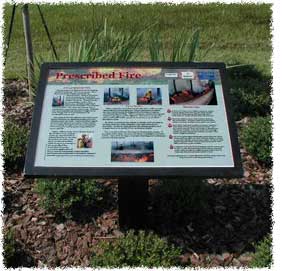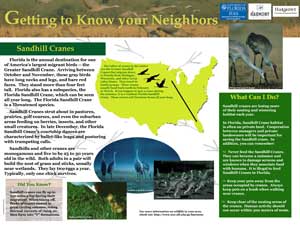|
 Background: In “green” communities,
one of the primary issues is whether local
residents, over the long term, will understand
and take local action to conserve natural
resources as originally intended by the developer.
Decisions made by homeowners ultimately determine
whether a community functions as a “green” community.
For example, people determine which light
bulbs to purchase, what types of vegetation
to plant
(e.g., exotics vs. natives), how much water
to use, and whether to ameliorate their yards
for wildlife. Background: In “green” communities,
one of the primary issues is whether local
residents, over the long term, will understand
and take local action to conserve natural
resources as originally intended by the developer.
Decisions made by homeowners ultimately determine
whether a community functions as a “green” community.
For example, people determine which light
bulbs to purchase, what types of vegetation
to plant
(e.g., exotics vs. natives), how much water
to use, and whether to ameliorate their yards
for wildlife.
Summary of Program: We have developed an environmental
education program that will engage the homeowners
in understanding and implementing natural resource
conservation strategies. The program contains
three elements:
- Interpretive Kiosks: Highly
visible interpretive kiosks are placed
in a trail system
or public areas where people traffic is
high. Each of the kiosks contains informative
displays
that discuss a particular topic, such as
water, energy, and wildlife. Kiosks are
dynamic and
different informative panels can be easily
changed.
- Web Site: A Web
site is constructed (in association
with the kiosks) that will give
detailed environmental information
and management strategies pertinent to a community.
- Brochure: A brochure
is given to each new homeowner. This
brochure will highlight
local natural resource issues and
invite homeowners to explore the kiosks in
their
neighborhood
and visit the Web site.
Program Details: Currently,
we are implementing this residential environmental
education program
in several “green” communities in
Central Florida. For the kiosks, full-color
exterior graphic panels are placed into each
kiosk. To date, we have 28 full-color panels
that cover seven themes: Water, Energy, Wildlife,
Environmental Landscaping, Insects/Pollinators,
Lakes, and Natural/Human History. The Web
site generally follows the topic themes.
The front
page is designed as an entry port for a community
and is designed to be compatible, in terms
of look and feel, with the overall design
and flavor
of the community. From there, residents can
link to various environmental topics and
learn more about local resources, issues,
and conservation
strategies. The brochure functions as a springboard
for people to explore the kiosks and Web
site. This brochure generally has four panels
(front
and back) and covers the above topic themes.
 Implementation: Overall, a community can implement
any combination of kiosks, panels, Web site,
and brochure. For example, a community may decide
to build two kiosks and use all 28 panels for
these two kiosks, Web site, and brochure in
combination but in certain instances, a community
may want to use the kiosks alone. Implementation: Overall, a community can implement
any combination of kiosks, panels, Web site,
and brochure. For example, a community may decide
to build two kiosks and use all 28 panels for
these two kiosks, Web site, and brochure in
combination but in certain instances, a community
may want to use the kiosks alone.
Estimated Costs: Approximate materials and
construction costs for the signs and panels:
- 24” x 36” all
aluminum Graphic Display Units: $1,300.00
each
- 24” x
36” single wood pedestal & aluminum
frame Graphic Display Units: $925.00
each
- Printing Costs for Full-Color Exterior
Graphics (panels): $80.00 each
- Printing Costs for 1000 Full-Color
Brochures: $800.00
- Production Costs: Production costs
are variable depending on the topics,
the community,
and the amount of site-specific information
that is needed for the graphic displays
or the Web site.
For
more information, contact Dr. Mark Hostetler
|